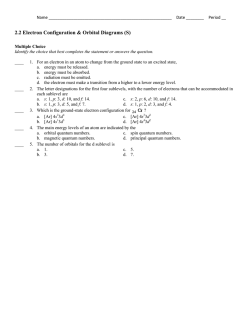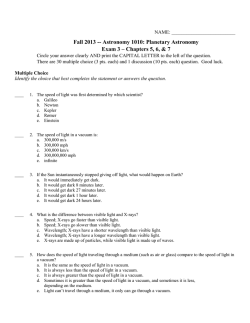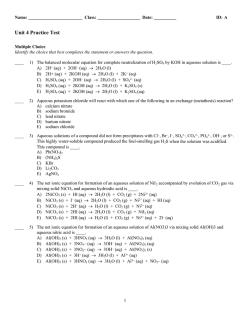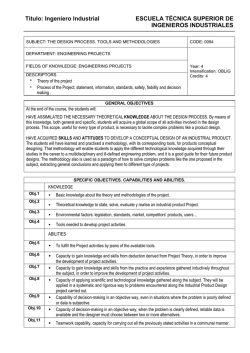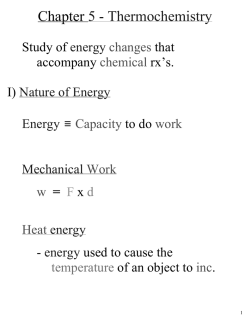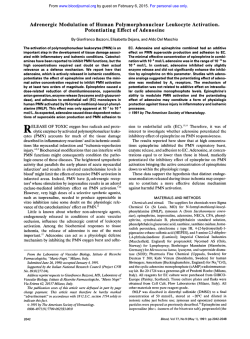
ExamView - Untitled.tst
Name: ________________________ Class: ___________________ Date: __________ ID: A Stoichiometry practice test-AP Multiple Choice Identify the choice that best completes the statement or answers the question. ____ ____ ____ ____ ____ ____ ____ 1. What is conserved in the reaction shown below? H 2 (g) + Cl 2 (g) 2HCl(g) a. mass only c. b. mass and moles only d. 2. What is conserved in the reaction shown below? N 2 (g) + 3F 2 (g) 2NF 3 (g) mass, moles, and molecules only mass, moles, molecules, and volume a. atoms only c. mass and atoms only b. mass only d. moles only 3. In the reaction 2CO(g) + O 2 (g) 2CO 2 (g), what is the ratio of moles of oxygen used to moles of CO 2 produced? a. 1:1 c. 1:2 b. 2:1 d. 2:2 4. Which of the following is true about the total number of reactants and the total number of products in the reaction shown below? C 5 H 12 (l) + 8O 2 (g) 5CO 2 (g) + 6H 2 O(g) a. 9 moles of reactants chemically change into 11 moles of product. b. 9 grams of reactants chemically change into 11 grams of product. c. 9 liters of reactants chemically change into 11 liters of product. d. 9 atoms of reactants chemically change into 11 atoms of product. 5. Which of the following is an INCORRECT interpretation of the balanced equation shown below? 2S(s) + 3O 2 (g) 2SO 3 (g) a. 2 atoms S + 3 molecules O 2 2 molecules SO 3 b. 2 g S + 3 g O 2 2 g SO 3 c. 2 mol S + 3 mol O 2 2 mol SO 3 d. none of the above 6. How many moles of aluminum are needed to react completely with 1.2 mol of FeO? 2Al(s) + 3FeO(s) 3Fe(s) + Al 2 O 3 (s) a. 1.2 mol c. 1.6 mol b. 0.8 mol d. 2.4 mol 7. Calculate the number of moles of Al 2 O 3 that are produced when 0.60 mol of Fe is produced in the following reaction. 2Al(s) + 3FeO(s) 3Fe(s) + Al 2 O 3 (s) ____ a. 0.20 mol c. 0.60 mol b. 0.40 mol d. 0.90 mol 8. How many moles of glucose, C 6 H 12 O 6 , can be "burned" biologically when 10.0 mol of oxygen is available? C 6 H 12 O 6 (s) + 6O 2 (g) 6CO 2 (g) + 6H 2 O(l) a. b. 0.938 mol 1.67 mol c. d. 1 53.3 mol 60.0 mol Name: ________________________ ____ ID: A 9. Hydrogen gas can be produced by reacting aluminum with sulfuric acid. How many moles of sulfuric acid are needed to completely react with 15.0 mol of aluminum? 2Al(s) + 3H 2 SO 4 (aq) Al 2 (SO 4 ) 3 (aq) + 3H 2 (g) a. 0.100 mol c. 15.0 mol b. 10.0 mol d. 22.5 mol ____ 10. When iron rusts in air, iron(III) oxide is produced. How many moles of oxygen react with 2.4 mol of iron in the rusting reaction? 4Fe(s) + 3O 2 (g) 2Fe2O 3 (s) a. 1.2 mol c. 2.4 mol b. 1.8 mol d. 3.2 mol ____ 11. At STP, how many liters of oxygen are required to react completely with 3.6 liters of hydrogen to form water? 2H 2 (g) + O 2 (g) 2H 2 O(g) a. 1.8 L c. 2.0 L b. 3.6 L d. 2.4 L ____ 12. Which type of stoichiometric calculation does not require the use of the molar mass? a. mass-mass problems c. mass-particle problems b. mass-volume problems d. volume-volume problems ____ 13. The equation below shows the decomposition of lead nitrate. How many grams of oxygen are produced when 11.5 g NO 2 is formed? 2Pb(NO 3 ) 2 (s) 2PbO(s) 4NO 2 (g) O 2 (g) a. 1.00 g c. 2.88 g b. 2.00 g d. 32.0 g ____ 14. Iron(III) oxide is formed when iron combines with oxygen in the air. How many grams of Fe 2 O 3 are formed when 16.7 g of Fe reacts completely with oxygen? 4Fe(s) 3O 2 (g) 2Fe 2 O 3 (s) a. 12.0 g c. 47.8 g b. 23.9 g d. 95.6 g ____ 15. When glucose is consumed, it reacts with oxygen in the body to produce carbon dioxide, water, and energy. How many grams of carbon dioxide would be produced if 45 g of C 6 H 12 O 6 completely reacted with oxygen? a. 1.5 g c. 11 g b. 1.8 g d. 66 g ____ 16. Aluminum reacts with sulfuric acid to produce aluminum sulfate and hydrogen gas. How many grams of aluminum sulfate would be formed if 250 g H 2 SO 4 completely reacted with aluminum? 2Al(s) 3H 2 SO 4 (aq) Al2 (SO 4 ) 3 (aq) 3H 2 (g) a. 0.85 g c. 450 g b. 290 g d. 870 g ____ 17. Mercury can be obtained by reacting mercury(II) sulfide with calcium oxide. How many grams of calcium oxide are needed to produce 36.0 g of Hg? 4HgS(s) + 4CaO(s) 4Hg(l) + 3CaS(s) + CaSO4 a. b. 1.80 g 7.56 g c. d. 2 10.1 g 13.4 g Name: ________________________ ID: A ____ 18. How many moles of H 3 PO 4 are produced when 71.0 g P 4 O 10 reacts completely to form H 3 PO 4 ? P 4 O 10 (s) 6H 2 O(l) 4H 3 PO 4 (aq) a. 0.063 5 mol c. 4.00 mol b. 1.00 mol d. 16.0 mol ____ 19. How many grams of H 3 PO 4 are produced when 10.0 moles of water react with an excess of P 4 O 10 ? P 4 O 10 (s) 6H 2 O(l) 4H 3 PO 4 (aq) a. 1.22 g c. 147 g b. 6.7 g d. 653 g ____ 20. How many liters of hydrogen gas are needed to react with CS 2 to produce 2.50 L of CH 4 at STP? 4H 2 (g)+CS 2 (l) CH 4 (g) 2H 2 S(g) a. 2.50 L c. 7.50 L b. 5.00 L d. 10.0 L ____ 21. Which conversion factor do you use first to calculate the number of grams of CO 2 produced by the reaction of 50.6 g of CH 4 with O 2 ? The equation for the complete combustion of methane is: CH 4 (g) 2O 2 (g) CO 2 (g)+2H 2 O(l) a. 1 mol CH 4 /16.0 g CH 4 c. 16.0 g CH 4 /1 mol CO 4 b. d. 44.0 g CO 2 /2 mol CO 2 2 mol O 2 /1 mol CO 2 ____ 22. Which of the following statements is true about the following reaction? 3NaHCO 3 (aq) + C 6 H 8 O 7 (aq) 3CO 2 (g) + 3H 2 O(s) +Na 3 C 6 H 5 O 7 (aq) a. 22.4 L of CO 2 (g) are produced for every liter of C 6 H 8 O 7 (aq) reacted. b. 1 mole of water is produced for every mole of carbon dioxide produced. c. 6.02 10 23 molecules of Na 3 C 6 H 5 O 7 (aq) are produced for every mole of NaHCO 3 (aq) d. used. 54 g of water are produced for every mole of NaHCO 3 (aq) produced. ____ 23. How many liters of NH 3 are needed to react completely with 30.0 L of NO (at STP)? 4NH 3 (g) + 6NO(g) 5N 2 (g) + 6H 2 O(g) a. 5.0 L c. 7.5 L b. 20.0 L d. 120.0 L ____ 24. When 0.1 mol of calcium reacts with 880 g of water, 2.24 L of hydrogen gas form (at STP). How would the amount of hydrogen produced change if the volume of water was decreased to 440 mL (440 g)? a. Only one half the volume of hydrogen would be produced. b. The volume of hydrogen produced would be the same. c. The volume of hydrogen produced would double. d. No hydrogen would be produced. ____ 25. Glucose, C 6 H 12 O 6 , is a good source of food energy. When it reacts with oxygen, carbon dioxide and water are formed. How many liters of CO 2 are produced when 126 g of glucose completely react with oxygen? C 6 H 12 O 6 (s) + 6O 2 (g) 6CO 2 (g) + 6H 2 O(l) + 673 kcal a. b. 4.21 L 5.33 L c. d. 3 15.7 L 94.1 L Name: ________________________ ID: A ____ 26. Calcium oxide, or lime, is produced by the thermal decomposition of limestone in the reaction CaCO 3 (s) CaO(s) + CO 2 (g). What mass of lime can be produced from 1.5 10 3 kg of limestone? a. 8.4 10 5 kg c. 8.4 kg 2 b. 8.4 10 kg d. none of the above ____ 27. Which of the following is NOT true about limiting and excess reagents? a. The amount of product obtained is determined by the limiting reagent. b. A balanced equation is necessary to determine which reactant is the limiting reagent. c. Some of the excess reagent is left over after the reaction is complete. d. The reactant that has the smallest given mass is the limiting reagent. ____ 28. How many grams of chromium are needed to react with an excess of CuSO 4 to produce 27.0 g Cu? 2Cr(s) + 3CuSO 4 (aq) Cr 2 (SO 4 ) 3 (aq) + 3Cu(s) a. 14.7 g c. 33.2 g b. 18.0 g d. 81.5 g ____ 29. How many grams of beryllium are needed to produce 36.0 g of hydrogen? (Assume an excess of water.) Be(s) + 2H 2 O(l) Be(OH) 2 (aq) + H 2 (g) a. 4.00 g c. 162 g b. 36.0 g d. 324 g ____ 30. How many liters of NH 3 , at STP, will react with 5.3 g O 2 to form NO 2 and water? 4NH 3 (g) + 7O 2 (g) 4NO 2 + 6H 2 O(g) a. 0.004 23 L c. 3.03 L b. 2.12 L d. 6.49 L ____ 31. How many liters of chlorine gas can be produced when 0.98 L of HCl react with excess O 2 at STP? 4HCl(g) + O 2 (g) 2Cl 2 (g) + 2H 2 O(g) a. 0.98 L c. 3.9 L b. 0.49 L d. 2.0 L ____ 32. Identify the limiting reagent and the volume of CO 2 formed when 11 L CS 2 reacts with 18 L O 2 to produce CO 2 gas and SO 2 gas at STP. CS 2 (g) + 3O 2 (g) CO 2 (g) + 2SO 2 (g) a. CS 2 ; 5.5 L CO 2 c. CS 2 ; 11 L CO 2 b. O 2 ; 6.0 L CO 2 d. O 2 ; 27 L CO 2 ____ 33. What is the maximum number of grams of PH 3 that can be formed when 6.2 g of phosphorus reacts with 4.0 g of hydrogen to form PH 3 ? P 4 (g) + 6H 2 (g) 4PH 3 (g) a. 0.43 g c. 270 g b. 6.8 g d. 45 g ____ 34. Methane and hydrogen sulfide form when hydrogen reacts with carbon disulfide. Identify the excess reagent and calculate how much remains after 36 L of H 2 reacts with 12 L of CS 2 . 4H 2 (g) + CS 2 (g) CH 4 (g) + 2H 2 S(g) a. 3 L CS 2 c. 9 L CS 2 b. 6 L CS 2 d. 12 L H 2 4 Name: ________________________ ID: A ____ 35. Metallic copper is formed when aluminum reacts with copper(II) sulfate. How many grams of metallic copper can be obtained when 54.0 g of Al react with 319 g of CuSO 4 ? Al + 3CuSO 4 Al 2 (SO 4 ) 3 + 3Cu a. 21.2 g c. 162 g b. 127 g d. 381 g ____ 36. Which statement is true if 12 mol CO and 12 mol Fe 2 O 3 are allowed to react? 3CO(g) + Fe 2 O 3 (s) 2Fe(s) + 3CO 2 (g) a. b. The limiting reagent is CO and 8.0 mol Fe will be formed. The limiting reagent is CO and 3.0 mol CO 2 will be formed. c. The limiting reagent is Fe 2 O 3 and 24 mol Fe will be formed. d. The limiting reagent is Fe 2 O 3 and 36 mol CO 2 will be formed. ____ 37. Which of the following would be the limiting reagent in the reaction shown below? 2H 2 (g) + O 2 (g) 2H 2 O(g) a. 50 molecules of H 2 b. 50 molecules of O 2 c. Neither a nor b is limiting. d. Both a and b are considered limiting reagents. ____ 38. Which of the following is NOT true about "yield"? a. The value of the actual yield must be given in order for the percent yield to be calculated. b. The percent yield is the ratio of the actual yield to the theoretical yield. c. The actual yield may be different from the theoretical yield because reactions do not always go to completion. d. The actual yield may be different from the theoretical yield because insufficient limiting reagent was used. ____ 39. Which of the following is NOT a reason why actual yield is less than theoretical yield? a. impure reactants present c. loss of product during purification b. competing side reactions d. conservation of mass ____ 40. Lead nitrate can be decomposed by heating. What is the percent yield of the decomposition reaction if 9.9 g Pb(NO 3 ) 2 are heated to give 5.5 g of PbO? 2Pb(NO 3 ) 2 (s) 2PbO(s) + 4NO 2 (g) + O 2 (g) a. 44% c. 67% b. 56% d. 82% ____ 41. Hydrogen gas is produced when zinc reacts with hydrochloric acid. If the actual yield of this reaction is 85%, how many grams of zinc are needed to produce 112 L of H 2 at STP? Zn(s) + 2HCl(aq) ZnCl 2 (s) + H 2 (g) a. 95 g c. 280 g b. 180 g d. 380 g ____ 42. In a particular reaction between copper metal and silver nitrate, 12.7 g Cu produced 38.1 g Ag. What is the percent yield of silver in this reaction? Cu + 2AgNO 3 Cu(NO 3 ) 2 + 2Ag a. b. 56.7% 77.3% c. d. 5 88.2% 176% Name: ________________________ ID: A ____ 43. Based on the solubility rules, which one of the following compounds should be insoluble in water? a. NaCl b. MgBr2 c. FeCl2 d. AgBr ____ 44. Based on the solubility rules, which of the following compounds should be insoluble in water? a. Na2SO4 b. BaSO4 c. CuSO4 d. MgSO4 ____ 45. Based on the solubility rules, which of the following should be soluble in water? a. CaSO4 b. BaSO4 c. PbSO4 d. KK2SO4 ____ 46. Which of the following will occur when a solution of Pb(NO3)2(aq) is mixed with a solution of KI(aq) ? a. A precipitate of KNO3 will form; Pb2+ and I– are spectator ions. b. No precipitate will form. c. A precipitate of Pb(NO3)2 will form; K+ and I– are spectator ions. d. A precipitate of PbI2 will form; K+ and NO3– are spectator ions. ____ 47. Which of the following will occur when solutions of CuSO4(aq) and BaCl2(aq) are mixed? a. A precipitate of CuCl2 will form; Ba2+ and SO42– are spectator ions. b. A precipitate of CuSO4 will form; Ba2+ and Cl– are spectator ions. c. A precipitate of BaSO4 will form; Cu2+ and Cl– are spectator ions. d. A precipitate of BaCl2 will form; Cu2+ and SO42– are spectator ions. 6 Name: ________________________ ID: A ____ 48. Identify the correct net ionic equation for the reaction that occurs when solutions of HNO3 and KOH are mixed? a. HNO3(aq) + KOH(aq) H2O(l) + KNO3(aq) b. K+(aq) + NO3-(aq) KNO3(aq) c. HNO3(aq) + KOH(aq) 2(l) + KNO3(s) d. H+(aq) + OH-(aq) H2O(l) ____ 49. The oxidation number of S in K2SO4 is a. +6 b. +4 c. +2 d. –1 ____ 50. The oxidation number of Fe in K3Fe(CN)6 is a. +3 b. +2 c. +1 d. –3 ____ 51. The oxidation number of Cr in Cr2O72– is a. –12 b. –7 c. –2 d. +6 ____ 52. The highest possible oxidation number of carbon is a. +8 b. +6 c. +4 d. +2 7 Name: ________________________ ID: A ____ 53. The oxidation number of N in N2H4 is a. +4 b. –4 c. +2 d. –2 ____ 54. Determine the correct oxidation numbers for all three elements in Rb2SO3 in the order that the elements are shown in the formula. a. –2, +6, –2 b. –1, +4, –3 c. +2, +4, –2 d. +1, +4, –2 ____ 55. Which of the following equations does not represent an oxidation-reduction reaction? a. 3Al + 6HCl 3H2 + AlCl3 b. 2H2O 2H2 + O2 c. 2NaCl + Pb(NO3)2 PbCl2 + 3NaNO3 d. 2NaI + Br2 2NaBr + I2 ____ 56. In the following chemical reaction the oxidizing agent is 5H2O2 + 2MnO4– + 6H+ 2Mn2+ + 8H2O + 5O2 a. H2O2 b. MnO4– c. H+ d. Mn2+ 8 Name: ________________________ ID: A ____ 57. Identify the oxidizing agent in the following chemical reaction. 2MnO4– + 5H2SO3 2Mn2+ + 5SO42– + 4H+ + 3H2O a. MnO4– b. H2SO3 c. Mn2+ d. SO42– ____ 58. Identify the reducing agent in the following chemical reaction. 5Fe2+(aq) + MnO4–(aq) + 8H+(aq) 5Fe3+(aq) + Mn2+(aq) + 4H2O(l) a. Fe2+ b. MnO4– c. H+ d. Mn2+ ____ 59. What element is oxidized in the following chemical reaction? 3Cu + 8HNO3 3Cu(NO3)2 + 2NO + 4H2O a. Cu b. H c. N d. O ____ 60. What element is reduced in the following chemical reaction? Cu + 2H2SO4 CuSO4 + SO2 + 2H2O a. Cu b. H c. S d. O 9 Name: ________________________ ID: A ____ 61. Predict the products of the following single replacement reaction. Fe(s) + CuSO4(aq) a. Cu(s) + FeSO4(aq) b. Fe(s) + Cu(s) + SO4(aq) c. CuS(s) + Fe2SO4(aq) d. FeCuSO4(aq) ____ 62. A 4.691 g sample of MgCl2 is dissolved in enough water to give 750. mL of solution. What is the magnesium ion concentration in this solution? a. 3.70 10–2 M b. 1.05 10–2 M c. 6.57 10–2 M d. 4.93 10–2 M ____ 63. 35.0 mL of 0.255 M nitric acid is added to 45.0 mL of 0.328 M Mg(NO3)2. What is the concentration of nitrate ion in the final solution? a. 0.481 M b. 0.296 M c. 0.854 M d. 1.10 M ____ 64. 17.5 mL of a 0.1050 M Na2CO3 solution is added to 46.0 mL of 0.1250 M NaCl. What is the concentration of sodium ion in the final solution? a. 0.205 M b. 0.119 M c. 0.539 M d. 0.148 M 10 Name: ________________________ ID: A ____ 65. A 350. mL solution of 0.150 M HNO3(aq) is mixed with a solution of 230. mL of 0.240 M HCl(aq). How many moles of H+(aq) are present in the final solution? a. 0.0525 moles H+ b. 0.108 moles H+ c. 0.186 moles H+ d. 0.0539 moles H+ ____ 66. What volume (mL) of a 0.3428 M HCl(aq) solution is required to completely neutralize 23.55 mL of a 0.2350 M Ba(OH)2(aq) solution? a. 55.34 mL b. 11.07 mL c. 16.14 mL d. 32.29 mL ____ 67. A 250. mL sample of 0.0328M HCl is partially neutralized by the addition of 100. mL of 0.0245M NaOH. Find the concentration of hydrochloric acid in the resulting solution. a. 0.00700 M b. 0.0164 M c. 0.0383 M d. 0.0230 M Short Answer 68. If a total of 13.5 mol of NaHCO 3 and 4.5 mol of C 6 H 8 O 7 react, how many moles of CO 2 and Na 3 C 6 H 5 O 7 will be produced? 3NaHCO 3 (aq) + C 6 H 8 O 7 (aq) 3CO 2 (g) + 3H 2 O(s) +Na 3 C 6 H 5 O 7 (aq) 69. If 8.00 mol of NH 3 reacted with 14.0 mol of O 2 , how many moles of H 2 O will be produced? 4NH 3 (g) + 7O 2 (g) 4NO 2 + 6H 2 O(g) 70. If 8.6 L of H 2 reacted with 4.3 L of O 2 at STP, what is the volume of the gaseous water collected (assuming that none of it condenses)? 2H 2 (g) + O 2 (g) 2H 2 O(g) 11 Name: ________________________ ID: A 71. Assuming STP and a stoichiometric amount of NH 3 and NO in an expandable container originally at 15 L, what is the final volume if the reaction goes to completion? 4NH 3 (g) + 6NO(g) 5N 2 (g) + 6H 2 O(g) 72. How many grams of CO are needed to react with an excess of Fe 2 O 3 to produce 209.7 g Fe? Fe 2 O 3 (s) + 3CO(g) 3CO 2 (g) + 2Fe(s) 73. How many liters of O 2 are needed to react completely with 45.0 L of H 2 S at STP? 2H 2 S(g) + 3O 2 (g) 2SO 2 (g) + 2H 2 O(g) 74. If 5.0 g of H 2 are reacted with excess CO, how many grams of CH 3 OH are produced, based on a yield of 86%? CO(g) + 2H 2 (g) CH 3 OH(l) 75. For the reaction 2Na(s) + Cl 2 (g) 2NaCl(s), how many grams of NaCl could be produced from 103.0 g of Na and 13.0 L of Cl 2 (at STP)? 76. Solid sodium reacts violently with water, producing heat, hydrogen gas, and sodium hydroxide. How many molecules of hydrogen gas are formed when 48.7 g of sodium are added to water? 2Na + 2H 2 O 2NaOH + H 2 77. The decomposition of potassium chlorate yields oxygen gas. If the yield is 95%, how many grams of KClO 3 are needed to produce 10.0 L of O 2 ? 2KClO 3 (s) 2KCl(s) + 3O 2 (g) 78. Consider the following reaction: 2H 2 S(g) + 3O 2 (g) 2SO 2 (g) + 2H 2 O(g) If O 2 was the excess reagent, 8.3 mol of H 2 S were consumed, and 137.1 g of water were collected after the reaction has gone to completion, what is the percent yield of the reaction? 12 ID: A Stoichiometry practice test-AP Answer Section MULTIPLE CHOICE 1. ANS: OBJ: 2. ANS: OBJ: 3. ANS: OBJ: 4. ANS: OBJ: 5. ANS: OBJ: 6. ANS: OBJ: 7. ANS: OBJ: 8. ANS: OBJ: 9. ANS: OBJ: 10. ANS: OBJ: 11. ANS: OBJ: 12. ANS: OBJ: 13. ANS: OBJ: 14. ANS: OBJ: 15. ANS: OBJ: 16. ANS: OBJ: 17. ANS: OBJ: 18. ANS: OBJ: 19. ANS: OBJ: 20. ANS: OBJ: 21. ANS: OBJ: D 12.1.2 C 12.1.2 C 12.1.2 A 12.1.2 B 12.1.2 B 12.2.1 A 12.2.1 B 12.2.1 D 12.2.1 B 12.2.1 A 12.2.2 D 12.2.2 B 12.2.2 B 12.2.2 D 12.2.2 B 12.2.2 C 12.2.2 B 12.2.2 D 12.2.2 D 12.2.2 A 12.2.2 PTS: STA: PTS: STA: PTS: STA: PTS: STA: PTS: STA: PTS: STA: PTS: STA: PTS: STA: PTS: STA: PTS: STA: PTS: STA: PTS: STA: PTS: STA: PTS: STA: PTS: STA: PTS: STA: PTS: STA: PTS: STA: PTS: STA: PTS: STA: PTS: STA: 1 Ch.3.d 1 Ch.3.d 1 Ch.4.c 1 Ch.3.d 1 Ch.3.a 1 Ch.3.d 1 Ch.3.d 1 Ch.3.d 1 Ch.3.d 1 Ch.3.d 1 Ch.3.d 1 Ch.3.d 1 Ch.3.d 1 Ch.3.d 1 Ch.3.d 1 Ch.3.d 1 Ch.3.d 1 Ch.3.d 1 Ch.3.d 1 Ch.3.d 1 Ch.3.d DIF: L1 REF: p. 356 DIF: L1 REF: p. 356 DIF: L1 REF: p. 356 DIF: L2 REF: p. 356 DIF: L2 REF: p. 356 DIF: L1 REF: p. 359 | p. 360 DIF: L1 REF: p. 359 | p. 360 DIF: L2 REF: p. 359 | p. 360 DIF: L2 REF: p. 359 | p. 360 DIF: L2 REF: p. 359 | p. 360 DIF: L1 REF: p. 363 | p. 364 | p. 365 | p. 366 DIF: L1 REF: p. 365 DIF: L2 REF: p. 360 | p. 361 | p. 362 DIF: L2 REF: p. 360 | p. 361 | p. 362 DIF: L2 REF: p. 360 | p. 361 | p. 362 DIF: L2 REF: p. 360 | p. 361 | p. 362 DIF: L2 REF: p. 360 | p. 361 | p. 362 DIF: L2 REF: p. 360 | p. 361 | p. 362 DIF: L2 REF: p. 360 | p. 361 | p. 362 DIF: L2 REF: p. 363 | p. 364 | p. 365 | p. 366 DIF: L2 REF: p. 360 | p. 361 | p. 362 1 ID: A 22. ANS: OBJ: 23. ANS: OBJ: 24. ANS: OBJ: 25. ANS: OBJ: 26. ANS: OBJ: 27. ANS: OBJ: 28. ANS: OBJ: 29. ANS: OBJ: 30. ANS: OBJ: 31. ANS: OBJ: 32. ANS: OBJ: 33. ANS: OBJ: 34. ANS: OBJ: 35. ANS: OBJ: 36. ANS: OBJ: 37. ANS: OBJ: 38. ANS: OBJ: 39. ANS: OBJ: 40. ANS: OBJ: 41. ANS: OBJ: 42. ANS: OBJ: 43. ANS: OBJ: 44. ANS: OBJ: 45. ANS: OBJ: B 12.2.2 B 12.2.2 B 12.2.2 D 12.2.2 B 12.2.2 D 12.3.1 A 12.3.1 C 12.3.1 B 12.3.1 B 12.3.1 B 12.3.1 B 12.3.1 A 12.3.1 B 12.3.1 A 12.3.1 B 12.3.1 D 12.3.2 D 12.3.2 D 12.3.2 D 12.3.2 C 12.3.2 D EK.3.C.1 B EK.3.C.1 D EK.3.C.1 PTS: STA: PTS: STA: PTS: STA: PTS: STA: PTS: STA: PTS: 1 Ch.3.d 1 Ch.3.d 1 Ch.3.d 1 Ch.3.d 1 Ch.3.d 1 DIF: L2 REF: p. 363 | p. 364 | p. 365 | p. 366 DIF: L2 REF: p. 363 | p. 364 | p. 365 | p. 366 DIF: L2 REF: p. 363 | p. 364 | p. 365 | p. 366 DIF: L2 REF: p. 363 | p. 364 | p. 365 | p. 366 DIF: L2 REF: p. 363 | p. 364 | p. 365 | p. 366 DIF: L1 REF: p. 369 PTS: STA: PTS: STA: PTS: STA: PTS: STA: PTS: STA: PTS: STA: PTS: STA: PTS: STA: PTS: STA: PTS: 1 Ch.3.d 1 Ch.3.d 1 Ch.3.d 1 Ch.3.d 1 Ch.3.d 1 Ch.3.d 1 Ch.3.d 1 Ch.3.d 1 Ch.3.d 1 DIF: L2 REF: p. 371 DIF: L2 REF: p. 371 DIF: L2 REF: p. 371 DIF: L2 REF: p. 371 DIF: L2 REF: p. 371 DIF: L2 REF: p. 371 DIF: L2 REF: p. 371 DIF: L2 REF: p. 371 DIF: L2 REF: p. 369 DIF: L2 REF: p. 369 PTS: 1 DIF: L1 REF: p. 372 PTS: 1 DIF: L1 REF: p. 373 PTS: STA: PTS: STA: PTS: STA: PTS: DIF: L2 REF: p. 375 DIF: L2 REF: p. 374 DIF: L2 REF: p. 375 DIF: Easy REF: Section: 4.2 PTS: 1 DIF: Easy REF: Section: 4.2 PTS: 1 DIF: Easy REF: Section: 4.2 1 Ch.3.f 1 Ch.3.d 1 Ch.3.f 1 2 ID: A 46. ANS: OBJ: 47. ANS: OBJ: 48. ANS: OBJ: 49. ANS: OBJ: 50. ANS: OBJ: 51. ANS: OBJ: 52. ANS: OBJ: 53. ANS: OBJ: 54. ANS: OBJ: 55. ANS: OBJ: 56. ANS: OBJ: 57. ANS: OBJ: 58. ANS: OBJ: 59. ANS: OBJ: 60. ANS: OBJ: 61. ANS: OBJ: 62. ANS: OBJ: 63. ANS: OBJ: 64. ANS: OBJ: 65. ANS: OBJ: 66. ANS: OBJ: 67. ANS: OBJ: D EK.3.C.1 C EK.3.C.1 D EK.3.A.1 A EK.3.B.3 A EK.3.B.3 D EK.3.B.3 C EK.3.B.3 D EK.3.B.3 D EK.3.B.3 C EK.3.B.3 B EK.3.B.3 A EK.3.B.3 A EK.3.B.3 A EK.3.B.3 C EK.3.B.3 A EK.3.C.1 C EK.2.A.3 A EK.2.A.3 D EK.2.A.3 B EK.2.A.3 D EK.2.A.3 B EK.2.A.3 PTS: 1 DIF: Medium REF: Section: 4.2 PTS: 1 DIF: Medium REF: Section: 4.2 PTS: 1 DIF: Medium REF: Section: 4.3 PTS: 1 DIF: Medium REF: Section: 4.4 PTS: 1 DIF: Medium REF: Section: 4.4 PTS: 1 DIF: Medium REF: Section: 4.4 PTS: 1 DIF: Easy REF: Section: 4.4 PTS: 1 DIF: Medium REF: Section: 4.4 PTS: 1 DIF: Medium REF: Section: 4.4 PTS: 1 DIF: Medium REF: Section: 4.4 PTS: 1 DIF: Medium REF: Section: 4.4 PTS: 1 DIF: Medium REF: Section: 4.4 PTS: 1 DIF: Medium REF: Section: 4.4 PTS: 1 DIF: Medium REF: Section: 4.4 PTS: 1 DIF: Medium REF: Section: 4.4 PTS: 1 DIF: Medium REF: Section: 4.4 PTS: 1 DIF: Medium REF: Section: 4.5 PTS: 1 DIF: Difficult REF: Section: 4.5 PTS: 1 DIF: Difficult REF: Section: 4.5 PTS: 1 DIF: Difficult REF: Section: 4.5 PTS: 1 DIF: Medium REF: Section: 4.7 PTS: 1 DIF: Difficult REF: Section: 4.7 3 ID: A SHORT ANSWER 68. ANS: 13.5 mol of CO 2 ; 4.5 mol of Na 3 C 6 H 5 O 7 PTS: 1 STA: Ch.3.d 69. ANS: 12.0 mol of H 2 O DIF: L1 REF: p. 359 OBJ: 12.2.1 PTS: 1 DIF: L2 REF: p. 359 OBJ: 12.2.1 STA: Ch.3.d 70. ANS: 8.6 L H 2 / (22.4 L/1 mol) 2 mol H 2 O/2 mol H 2 22.4 L/ 1 mol = 8.6 L H 2 O PTS: 1 DIF: L2 REF: p. 363 OBJ: 12.2.2 STA: Ch.3.d 71. ANS: 15 L of given reactants 11 L of products/10 L of reactants = 16.5 L PTS: 1 DIF: L3 REF: p. 363 OBJ: 12.2.2 STA: Ch.4.c 72. ANS: 209.7 g Fe 1 mol Fe/55.85 g Fe 3 mol CO/2 mol Fe 28.01 g CO/1 mol CO = 157.8 g CO PTS: 1 DIF: L2 REF: p. 371 OBJ: 12.3.1 STA: Ch.3.d 73. ANS: 45.0 L H 2 S 1 mol H 2 S/22.4 L H 2 S 3 mol O 2 /2 mol H 2 S 22.4 L O 2 /1 mol O 2 = 67.5 L O 2 PTS: 1 DIF: L3 REF: p. 371 OBJ: 12.3.1 STA: Ch.4.c 74. ANS: Theoretical yield: 5.0 g H 2 1 mol H 2 /2.0 g H 2 1 mol CH 3 OH/2 mol H 2 32 g CH 3 OH/1 mol CH 3 OH = 40 g CH 3 OH 40 g CH 3 OH 86% = 34 g CH 3 OH PTS: 1 STA: Ch.4.c DIF: L3 REF: p. 371 4 OBJ: 12.3.1 ID: A 75. ANS: 13.0 L Cl 2 1 mol Cl 2 /22.4 L Cl 2 = 0.580 mol Cl 2 103.0 g Na 1 mol Na/23 g Na = 4.48 mol Na Cl 2 is limiting reagent: 0.580 mol Cl 2 2 mol NaCl/1 mol Cl 2 = 1.16 mol NaCl 1.16 mol NaCl 58 g NaCl/1 mol NaCl = 67.3 g NaCl PTS: 1 DIF: L3 STA: Ch.3.d 76. ANS: Assume the sodium is limiting: REF: p. 371 OBJ: 12.3.1 48.7 g Na 1 mol Na/23.0 g Na 1 mol H 2 /2 mol Na (6.02 10 23 molecules H 2 )/1 mol H 2 = 6.37 10 23 molecules H 2 PTS: 1 DIF: L3 REF: p. 371 OBJ: 12.3.1 STA: Ch.3.d 77. ANS: 10.0 L 100%/95% = 10.5 L theoretical yield 10.5 L O 2 1 mol O 2 /22.4 L O 2 2 mol KClO 3 /3 mol O 2 122.6 g KClO 3 /1mol KClO 3 = 38.4 g KClO 3 PTS: 1 DIF: L3 REF: p. 374 OBJ: 12.3.2 STA: Ch.3.d 78. ANS: 8.3 mol H 2 S 2 mol H 2 O/2 mol H 2 S 18 g H 2 O/1 mol = 149.4 g H 2 O theoretical yield percent yield = 137.1 g/149.4 g 100% = 92% PTS: 1 STA: Ch.3.f DIF: L3 REF: p. 373 5 OBJ: 12.3.2
© Copyright 2024
